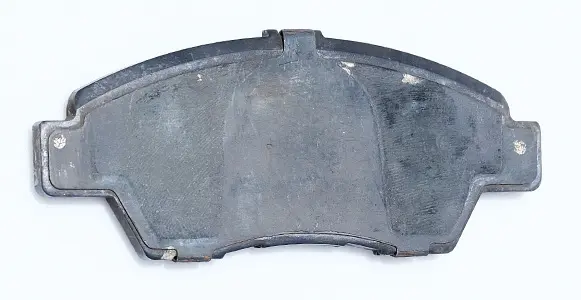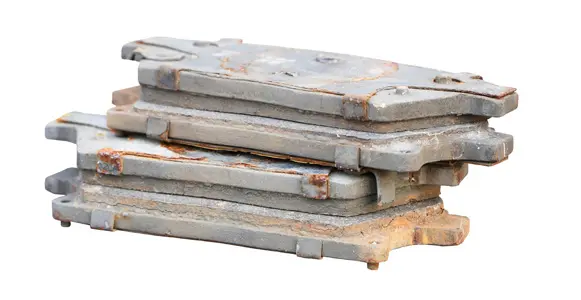BRAKE PADS
ABOUT USED BRAKE PADS AND RELATED BRAKE PARTS
WHAT ARE BRAKE PADS?
Brake pads are parts of disc brakes. Brake pads come in pairs - per disc brake – and are designed to assist in the braking of a vehicle (bringing the vehicle to a stop).
WHAT DO BRAKE PADS LOOK LIKE?
Brake pads have steel backing plates and a friction material. Brake pads can vary in size but are usually about 10 to 12 millimeters thick. After long-term use, brake pads will shrink in size to about 3 to 4 millimeters.
WHERE ARE THE BRAKE PADS LOCATED?
There are two brake pads located on each brake disc. The brake disc is located next to the wheels and the tires.
WHAT DO BRAKE PADS DO?
The function of the brake pad is to convert kinetic energy into heat energy. When the drive applies the brake pedal, the caliper is applied to the two brake pads - on the brake disc - to apply friction and stop the vehicle.
WHAT TO LOOK FOR IN USED BRAKE PADS
If you are looking to buy used brake pads, there are several factors that you need to consider. Here are the three primary things that you should look for when shopping for brake pads.
1). MATERIALS
Brake pads are available in a number of different materials. The two major types of brake pads are metallic and ceramic brake pads. Metallic brake pads are going to be much more common. Metallic brake pads are made from a combination of metals including iron, copper, steel, and graphite.
Ceramic brakes are less common and considered to be higher quality. Some of the benefits of ceramic brakes include quieter stops, cleaner wheels, and longer pad life. Also, ceramic brakes tend to have a lower coefficient of friction. If you are looking for brake pads for higher quality vehicles, then ceramic brakes are recommended.
2). WEAR AND CONDITION
When shopping for brake pads, the wear and the condition of the part is critical. You do not want to get brake pads that are near the end of their life. New brake pads will have a thickness of 10 to 12 millimeters. Brake pads at the end of their usability will have a thickness of about 3 to 4 millimeters.
When looking for used brake pads, you will want to select a part that has at least 5 millimeters of thickness.
Also be sure to check for even brake pad wear. If you are buying brake pads in pairs, you will want to ensure that both pads have even thickness to ensure quality stopping power for the vehicle.
3). BRAND NAMES
Finally, you will want to take a look at the brand names on the brake pads. Some of the top brand names in brake pads include the following:
- Akebono
- Power Stop
- KFE
- Bosch Blue
- Centric Posi
You will also want to consider OEM brake pads. OEM means original equipment manufacturer. These are brake pads that are exact duplicates of the original brake pads on the vehicle.
For instance, if you are looking for brake pads for a Toyota Camry, the OEM Toyota brake pads will be exactly the same type of brake pads that came on the Camry from the factory.
WHAT ELSE SHOULD YOU KNOW ABOUT BRAKE PADS
Brake pads typically last about 40,000 miles. They will wear down fast with aggressive driving. Also, front brake pads will typically wear out faster versus rear brake pads.
PARTS THAT CONNECT TO THE BRAKE PAD
Brake pads are attached to the brake caliper assembly that frames the rotor.
OTHER BRAKE PARTS YOU SHOULD KNOW ABOUT
Here are some other brake parts that you should know about if you are looking for more parts in a vehicle braking system.
BRAKE ROTORS
The brake rotor is the disc where the brake pad presses against to create friction and stop the vehicle. There are four major types of brake rotors:
- Smooth
- Cross-drilled
- Slotted
- Drilled and slotted
BRAKE CALIPERS
Calipers are the parts of the braking system that presses the disc brakes onto the brake rotor. This slows the vehicle’s wheels to bring it to a stop. Also, brake calipers can hold a vehicle in a station position.

